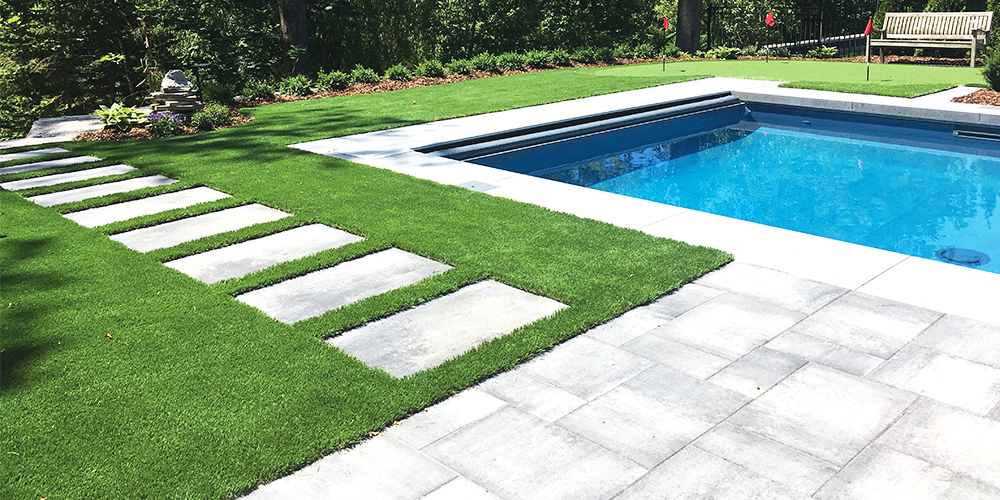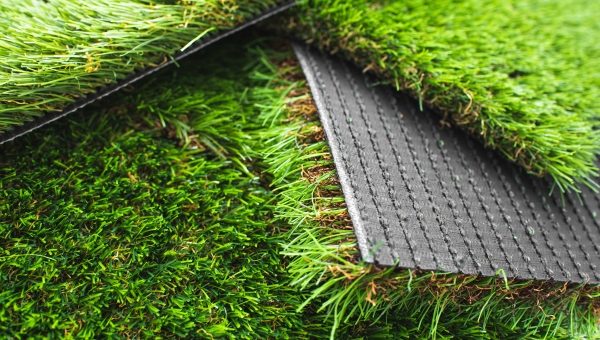Top Phoenix Turf Companies Offering High-Quality Synthetic Grass Solutions
Wiki Article
Delve Into the Environmental Advantages of Opting for Artificial Grass Solutions
The adoption of fabricated lawn solutions presents an engaging chance to attend to pressing ecological difficulties. By dramatically lowering water use and lessening the application of damaging chemicals, these options not only promote sustainable landscaping however also secure regional environments.Water Conservation Perks
One of the most significant advantages of synthetic grass is its capacity to conserve water. In contrast, synthetic turf does not need watering, significantly minimizing the total demand for water sources.By eliminating the demand for regular watering, synthetic grass contributes to sustainable landscape practices and aids minimize the environmental impact of too much water intake. Moreover, the conservation of water reaches the reduction of overflow, which can cause dirt disintegration and river air pollution.
Additionally, the installation of synthetic grass allows towns and house owners to allocate water resources much more successfully, concentrating on important usages such as alcohol consumption water and agriculture. The shift towards fabricated grass not only promotes responsible water use but also lines up with more comprehensive ecological goals focused on protecting all-natural sources.
As neighborhoods significantly focus on sustainability, the water conservation advantages of synthetic grass provide an engaging situation for its fostering in domestic and commercial landscape design projects.
Reduced Chemical Use
The shift to fabricated turf substantially lowers the reliance on chemical therapies generally used in natural yard upkeep. Standard lawn monitoring commonly includes the application of fertilizers, herbicides, and pesticides to promote development and control insects. These chemicals can pose risks to human health and wellness, local wildlife, and the environment, adding to soil and water contamination.In contrast, fabricated turf eliminates the demand for these hazardous compounds. By decreasing the launch of artificial substances right into the ecological community, synthetic turf advertises healthier dirt and water systems.
Furthermore, the lack of chemical drainage connected with synthetic grass installments assists safeguard neighborhood rivers from pollution, supporting aquatic life and keeping biodiversity. Artificial turf companies phoenix. As neighborhoods increasingly focus on lasting techniques, opting for fabricated lawn provides a sensible option that aligns with ecological preservation objectives. Via this change, homeowner can enjoy lavish green areas without endangering environmental health, leading the way for a much more lasting future
Reduced Carbon Footprint

Furthermore, the installation of fabricated lawn can lead to significant water preservation. Natural lawns require considerable quantities of water for irrigation, which not only includes in the carbon footprint related to water extraction and therapy yet also stress regional water sources. On the other hand, fabricated turf requires very little upkeep, needing no watering, thus significantly minimizing water usage and its associated energy prices.
In addition, the long life of fabricated lawn adds to its reduced carbon effect. With a life-span of approximately 15 years or more, the requirement for constant replacements is decreased, leading to less waste and reduced power usage in production and throwing away conventional grass choices. In general, synthetic grass offers a sustainable option for environmentally aware landscape design.
Environment Preservation
discover thisHabitat preservation is a vital consideration in the discussion over landscape design choices, particularly when comparing fabricated grass to all-natural lawn. Natural lawn lawns frequently require comprehensive upkeep, consisting of using herbicides, fertilizers, and chemicals, which can negatively impact regional environments. These chemicals can leach into the dirt and waterways, harming indigenous flora and animals and disrupting neighborhood environments.
Synthetic grass removes the demand for hazardous chemicals, consequently protecting close-by wild animals and preserving the integrity of bordering communities. The installment of man-made turf can lead to the conversion of previous grass areas right into more biodiverse landscapes, such as pollinator gardens or indigenous plant locations, which can support neighborhood wildlife.
Inevitably, the shift to artificial turf not just preserves water and lowers upkeep efforts however also promotes a much more harmonious connection between human activities and the natural surroundings, promoting habitat preservation at the same time.
Long-Term Sustainability
Long-lasting sustainability is a vital consider assessing the advantages of fabricated turf over standard yard lawns. Among one of the most substantial benefits of man-made grass is its resilience; it can last approximately 15-20 these details years with minimal maintenance, whereas natural yard needs regular reseeding and replacement. This long life reduces the demand for consistent resources, such as water, plant foods, and chemicals, which are essential for preserving a healthy turf yard.Furthermore, fabricated lawn adds to a decrease in carbon discharges linked with yard care equipment. Conventional lawns commonly require gas-powered lawn mowers, trimmers, and blowers, all of which contribute to air pollution. Arizona turf. On the other hand, synthetic grass removes the need for such equipment, advertising a cleaner setting
In addition, the manufacturing of synthetic grass significantly uses recycled products, boosting its sustainability account. As suppliers embrace eco-friendly techniques, the environmental impact of artificial grass remains to decrease.

Conclusion
The adoption of synthetic grass options provides substantial environmental benefits, consisting of substantial water conservation, reduced reliance on damaging chemicals, and a reduced carbon footprint. Artificial grass help in maintaining natural environments by minimizing land disruption and advertising long-lasting sustainability via the usage of sturdy products. Collectively, these variables underscore the possibility of man-made turf to add favorably to ecological health and offer a practical option to traditional landscape design methods in an increasingly resource-conscious globe.In comparison, synthetic lawn does not need watering, considerably lowering the total demand for water resources. By lessening the release of artificial compounds into the environment, fabricated turf advertises web much healthier dirt and water systems.
Furthermore, the installment of man-made turf can result in significant water conservation. In comparison, artificial grass needs minimal maintenance, calling for no watering, thus considerably minimizing water usage and its associated energy expenses.

Report this wiki page